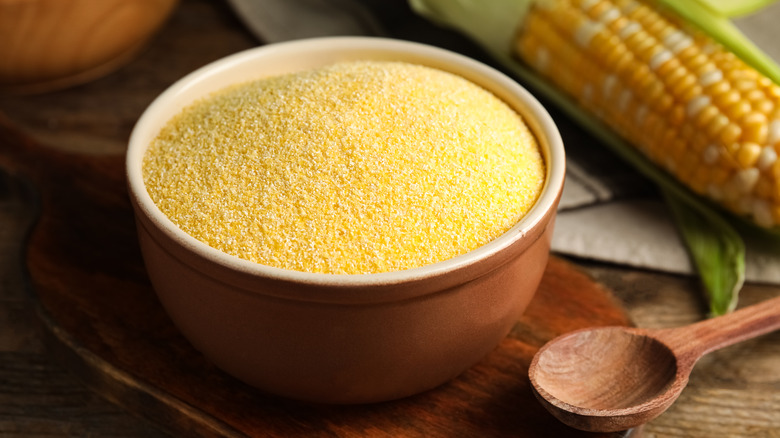Amplify The Fried Texture Of Your Po'boy With This Breading Technique
Any lover of sandwiches knows that there's almost no limit to the ways this lunchtime staple can be enjoyed. If you're a fan of cold cuts, you can't go wrong with an Italian sub loaded with salami, mortadella, and provolone cheese. If Jewish deli fare is more your style, you likely love a towering Reuben stuffed with corned beef, Swiss, and sauerkraut. And, of course, if you're simply hungry for an afternoon snack, it's hard to beat a classic PB&J.
But if the bold, confidently spiced flavors of Southern food are what your palate seeks, you've hopefully tried the staple Louisiana sando known as a po'boy. Essentially a loaded submarine sandwich featuring a protein such as roast beef or fried seafood that's topped with shredded lettuce, sliced tomatoes, sliced pickles, or other veggies, po'boys are served all across New Orleans — though they're not too hard to make in the home kitchen if you don't feel like buying a plane ticket. But before you get started frying your shrimp or oysters for the sandwich, make sure you have this one essential breading ingredient on hand.
Cornmeal creates extra-crispy fried seafood
If you've had the pleasure of chowing down at storied NOLA po'boy joints such as Domilise's or Parkway Tavern, you know that the fried seafood — either oysters, shrimp, or sometimes a combination of both — that stuffs these tasty sandwiches is easily the most important part of a po'boy. And to ensure super-crispy fried seafood, many spots will include some cornmeal along with the flour in the breading mix — a trick you can easily employ when making po'boys at home.
Our recipe for shrimp po'boys, for example, calls for a breading mixture composed of equal parts all-purpose flour and yellow cornmeal that's seasoned with salt, cayenne, paprika, onion and garlic powders, and black pepper. Our oyster po'boy recipe, meanwhile, calls for a very similar breading mix, both intended to bring that crunch to the final product that cornmeal is so adept at doing. But because cornmeal is coarser in texture than flour, it can be harder to get it to adhere to the dredged seafood. The solution? Simply bread your seafood, then lay it out on a plate or sheet pan and refrigerate for 10 to 15 minutes. This will help the coating truly stick, and after a quick dip in hot oil, you'll have irresistibly crispy seafood with which to pack your indulgent sandwich.

